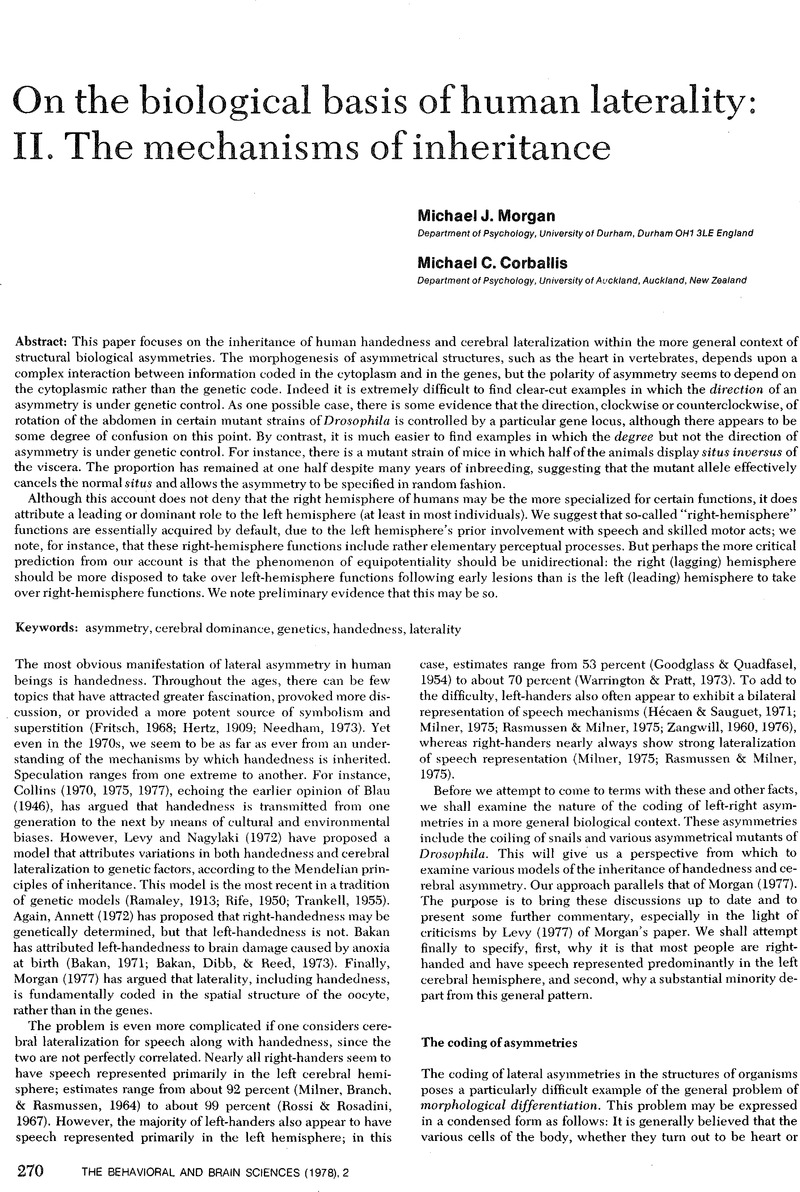No CrossRef data available.
Article contents
On the probable genetic basis of human handedness
Published online by Cambridge University Press: 04 February 2010
Abstract
An abstract is not available for this content so a preview has been provided. Please use the Get access link above for information on how to access this content.

- Type
- Open Peer Commentary
- Information
- Copyright
- Copyright © Cambridge University Press 1978
References
REFERENCES
Benton, A. L., Nyers, R., and Polder, G. J.Some aspects of handedness. Psychiatric Neurology Basel. 144:321–37. 1962.CrossRefGoogle ScholarPubMed
Hardyck, C. A model of individual differences in hemispheric functioning. In: Avakian-Whitaker, H. and Whitaker, H. A. (eds.), Studies in Neurolinguistics, Vol. 3. New York: Academic Press, 1977.Google Scholar
Hécaen, H. and Piercy, M.Paroxysmal dysphasia and the problem of cerebral dominance. Journal of Neurology, Neurosurgery and Psychiatry 19:194–201. 1956.CrossRefGoogle ScholarPubMed
McKeever, W. F., Gill, K. M., and VanDeventer, A. D.Letters versus dot stimuli as tools for “splitting the normal brain with reaction time.” Quarterly Journal of Experimental Psychology. 27:363–73. 1975.CrossRefGoogle Scholar
Satz, P., Achenbach, K., and Fennel, E.Correlations between assessed manual laterality and predicted speech laterality in a normal population. Neuropsychologia. 5:295–310. 1967.CrossRefGoogle Scholar




